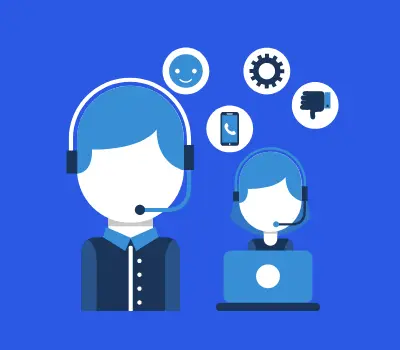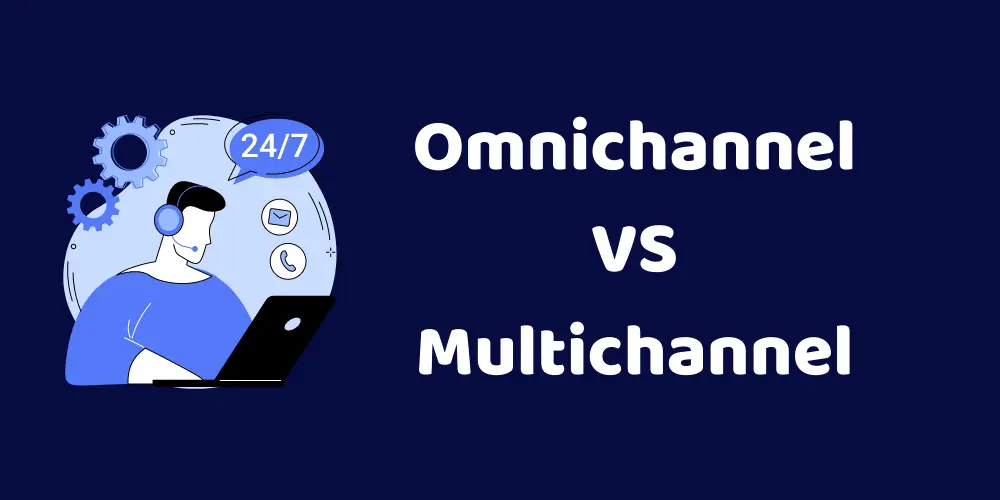In the customer service industry, omnichannel and multichannel are the two words that get thrown about a lot. What they have in common is that they offer more than one channel for customers to reach out to the brand through.
Every business practices this method of customer service. Comcast Xfinity has the same approach to providing customer support. Customers can reach out to Xfinity customer service through phone, email, or Xfinity’s social media handle. And these multiple channels are linked as well; any queries customers might send via email or post on Xfinity social media platform, the Xfinity customer support rep across all platforms are made aware through the omnichannel approach.
Now that you have an idea about these two different methods of customer support, let’s narrow them down to what each of these refers to.
What Is Omnichannel Support?

In this scenario, customer support is available across all communication channels, aiming to deliver a consistent customer experience. The main object of the omnichannel approach is that the support team is given access to all customer data and metrics across any channel.
This means that the customer support sitting behind a company’s Facebook page might be able to resolve an issue that was just resolved by the company’s call center agent a few days ago.
Associates can even share notes about their previous interactions with the customers. This method conveniently saves time for customers from having to repeat their queries.
The advantage of omnichannel support is that the customer experience is connected across channels and touchpoints, allowing customer support reps to deliver a quicker and personalized resolution of their issues.
This positively results in increased customer satisfaction and even retention in most scenarios.
What Is Multichannel Support?

This kind of support means that companies provide customer support through multiple channels, though these channels aren’t connected.
Taking the above example, in multichannel support, a support agent managing a Facebook page will not know if the same customer has already reached out to the company’s customer agent through phone communication in the past.
The benefit to having multichannel support is that brands get to offer multiple support channels to the customers, without having to unify all these channels. This approach is ideal for new companies that want to quickly engage with their customers through their preferred channel of communication.
Key Differences between Omnichannel and Multichannel Support
When considering the omnichannel and multichannel support, there are some key differences to look through;
Managing Customer Engagement OR Customer Experience?

The main aim of multichannel support is to focus on engaging customers, where more and more customers are made aware of the brand. On the other hand, omnichannel refers to improving customer experience, achieving its consistency for those who are already aware and engaging with the brand.
If you take the example of social media into account, brands will focus on getting more followers, comments, likes, and shares in a multichannel approach, as to see the number of people engaging with the brand.
The omnichannel strategy will include focusing less on such quantity and more on ensuring that customers go from your social media platform to your website i.e. clicking on the brand’s Facebook ad which will lead them to the brand’s website.
Focused on Customer or Channel?

Moreover, the multichannel approach focuses on the number of channels being used i.e. to promote the brand. Having more options for channels available can allow customers to choose how they want to engage with the business.
On the other hand, the customer is the main focus of the omnichannel approach. Through this, brands would make sure that customers have a seamless experience as they move from one channel to another. In this scenario, it is better to have less interconnected channels than to have more unconnected channels.
Check also – What Is Good Internet Speed?
Quality OR Quantity?

As mentioned before, the multichannel approach is all about increasing the number of channels available. It helps to increase the reach of the brands, however, there is no link between these channels.
For instance, if a customer cannot log in to their account on the website, they will dial the customer helpline. The customer support rep will help them figure out the problem, however, the customer will call the helplines again, but this time a different customer support rep will pick up the call.
Since the channels are not synced, the customer will have to explain the problem again from the beginning.
In this case, the omnichannel strategy will work out since it is focused on the quality of support being offered through the brands’ channels.
Customers can use any channel available to reach out to the brand and the quality of experience will be the same in all of them.
The Final Verdict
In summary, the multichannel approach is about increasing the brand’s reach toward a large number of customers and the omnichannel refers to making sure the customers have a smooth experience with the brand.
However, for any brand, managing the customer experience is important to its success and reputation, hence that should always be the focus. As a result of this, the omnichannel approach is the one that brands businesses should focus on more than the multichannel approach.

